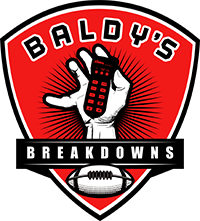
Step onto the gridiron, where the battle of wits unfolds in the heart of every play. Game strategy isn’t just a plan; it’s a chess match between coaches and minds. Dive deep into the intricate web of decisions that shape the outcome of every NFL clash. Join us as we dissect, analyze, and unravel the brilliance behind every move, every call, and every triumph in the relentless pursuit of victory.
Into the Combat Zone
The NFL isn’t just a test of physical prowess; it’s a densely packed, minute-by-minute strategic masterpiece. The concept of game strategy is the heartbeat of every franchise, turning coaches into generals and players into soldiers, each batch of plays meticulously planned over countless hours.
In an environment where even a single misstep can throw off the entire rhythm, a winning game strategy becomes indispensable. With skillful orchestration and tactical acumen, coaches can outmaneuver opponents in ways that aren’t always obvious to us in the stands. This article dives deeper into the nuanced arena of game strategy to spotlight the secret weapons that determine victories.
The Playbook: The Strategic Command Center
When analysts talk about game strategy, the playbook is the first element that springs to mind. It’s not just a collection of plays but a carefully concocted mix of moves designed to exploit the weaknesses of the opposing team. Coaches pour over film for hours, analyzing the opposition to tailor a bespoke strategy, enabling the team to anticipate the rival’s tactics.
From offensive set-ups to defensive formations, the playbook contains multitudes. For instance, let’s delve into the use of the RPO (Run-Pass Option). This play confounds defenses, providing the quarterback with the flexibility to adjust in real time, based on the defensive setup. Using an RPO depends heavily on keen observational skills and quick decision-making — both are critical to game strategy.
In-Game Adjustments: The Real Test of Strategy
Imagine having the perfect plan, only to see it unraveling mid-game. This is where the true magic of game strategy lies: in-game adjustments. The best coaches adapt swiftly, identifying failures and pivoting seamlessly.
Take the halftime adjustments as an example. Securing a lead at halftime isn’t a guarantee. What makes or breaks a game is how teams respond in the second half. These adjustments often involve tweaks in protection schemes, changes in coverage techniques, or introducing new plays that weren’t part of the initial plan.
In an NFL season filled with drama, an illustration comes from the Patriots’ Super Bowl LI comeback against the Falcons. Down 28-3, Bill Belichick and his crew made crucial halftime adjustments that led to one of the most stunning reversals in football history, revolved around enhancing pass protections and ramping up defensive pressure.
Time Management: The Invisible Hand of Strategy
Every second counts in football, and how those seconds are utilized is another crucial facet of game strategy. Clock management can be the determining factor in close games. Burning timeouts wisely, knowing when to let the clock run down, and mastering the two-minute drill are indispensable elements the spectators might overlook.
For example, manipulating the game clock effectively during the final two minutes reveals tactical mastery. When a team adeptly marches down the field, exploiting sideline routes or spiking the ball to stop the clock, it exemplifies brilliant planning.
The Element of Surprise: Trick Plays and Gutsy Calls
A well-timed trick play can completely dismantle even the most prepared defense. From flea flickers to double reverses, these high-risk, high-reward strategies are designed to catch the opposition off guard.
Take the Philly Special, executed by the Eagles in Super Bowl LII, which left everyone, including the Patriots’ defense world, speechless. These moments of brilliant ingenuity don’t just seize the immediate advantage but also shift the momentum, electrifying the team and fans alike.
Philosophy and Culture: The DNA of Strategy
Beyond tangible actions, game strategy is deeply ingrained in the culture and philosophical foundations of the team. Whether it’s Seattle’s “Legion of Boom” dominating with their rough, hard-hitting defense or Kansas City’s fast and fluid offense, it’s the team’s identity that often guides strategic choices.
Consider Sean McVay’s Los Angeles Rams, known for their pre-snap motions and complex offensive schemes. These mechanics aren’t just for show; they’re crafted to confuse defenses about who to focus on. Mastering the art of misdirection is fundamental in a successful game strategy.
Wrapping It Up
The intricacies of game strategy reflect the broader necessities of life – flexibility, anticipation, and adaptation. It’s about bringing together an orchestra of individual talents, harmonized by strategic brilliance.
Have thoughts or want to see more breakdowns? Join in on the conversation with Brian Baldinger himself and plunge into more NFL game strategy pearls:
The gridiron chess match is relentless, but the joy lies in unpacking these intricacies, turning casual viewers into passionate students of the game.

